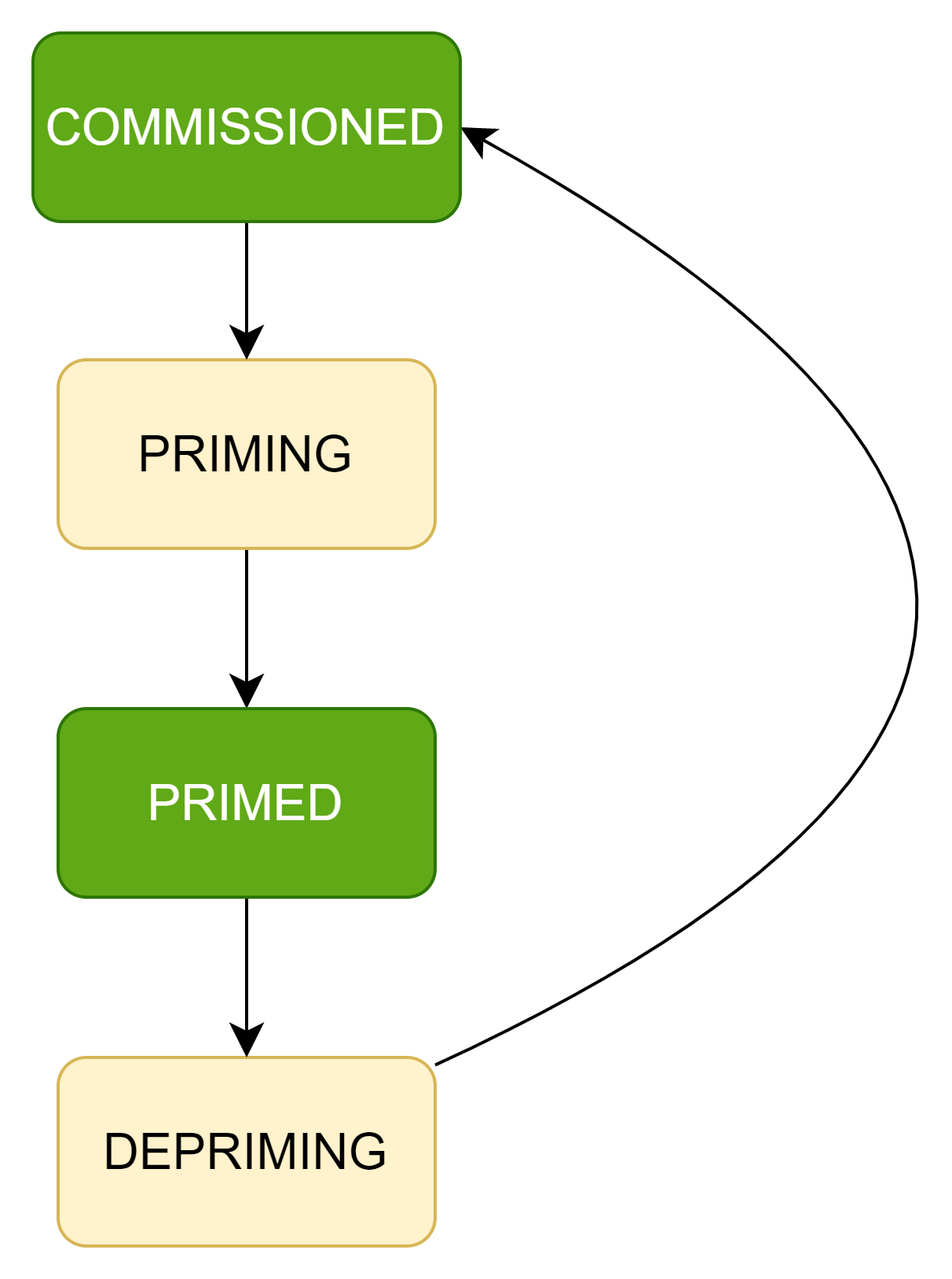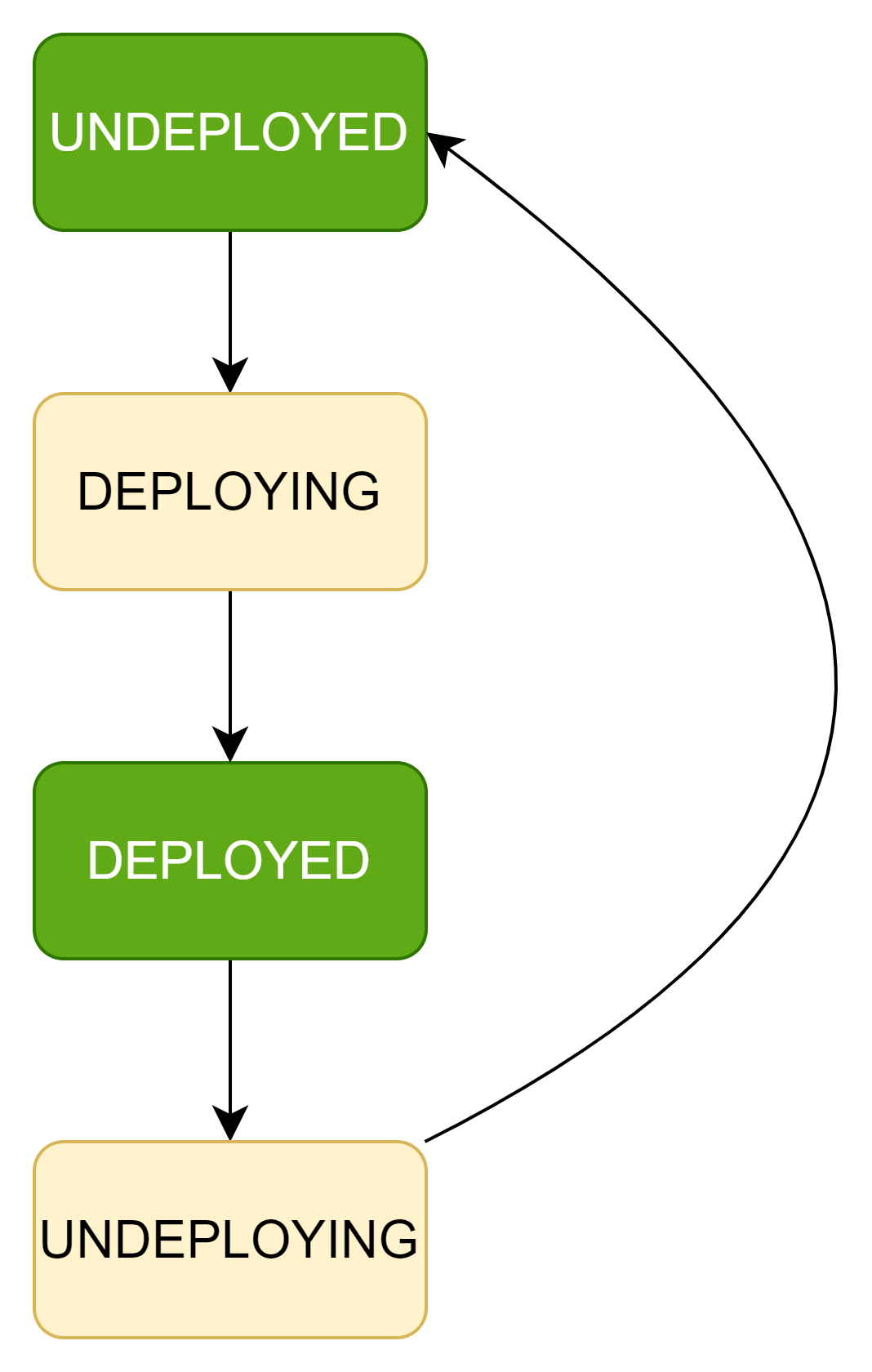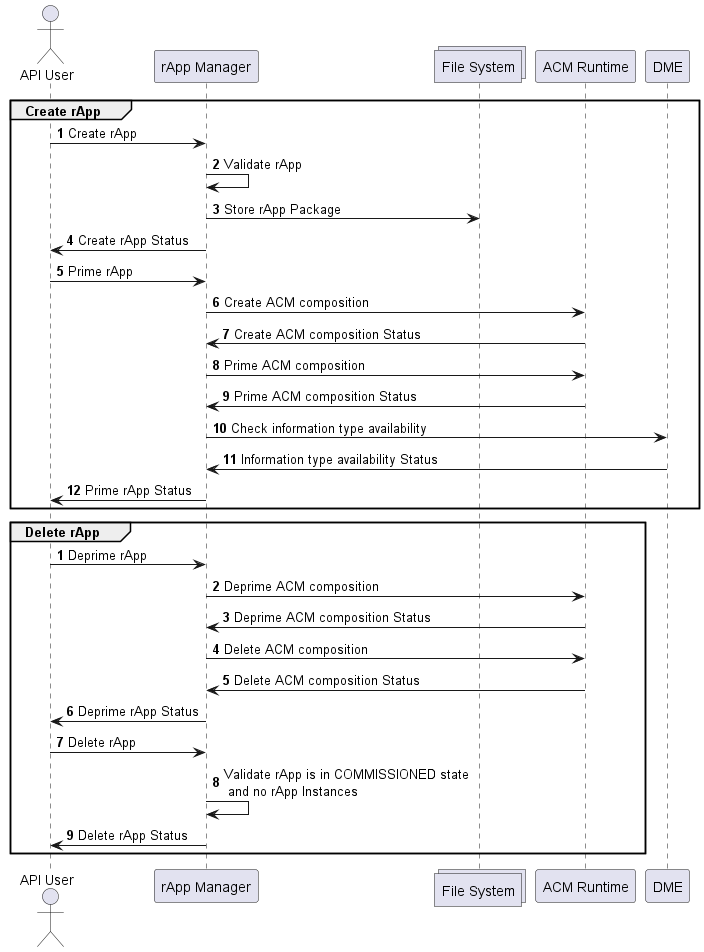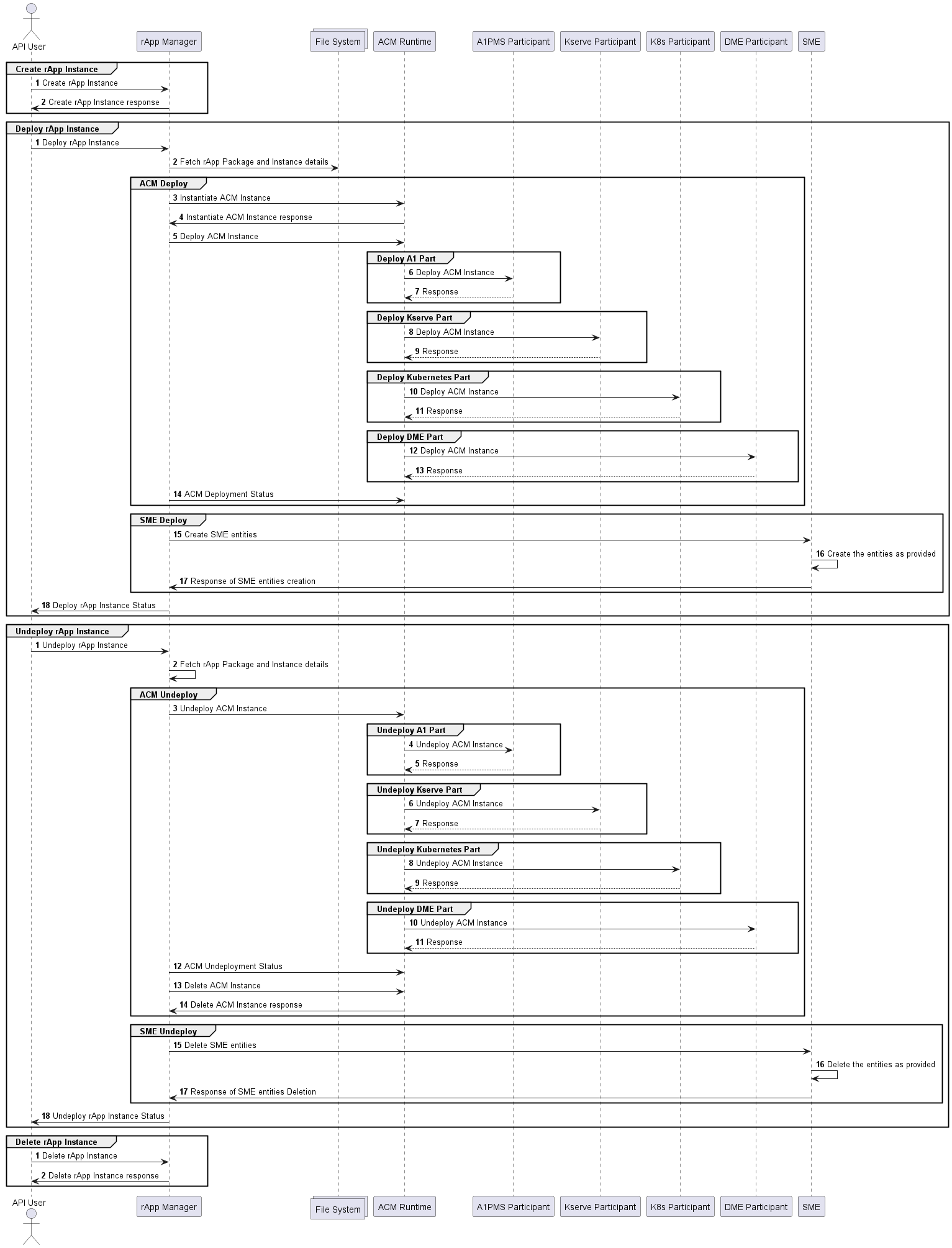| Table of Contents |
|---|
Introduction
The rApp Manager is a lifecycle management service for rApps. It gets the rApp as ASD formatted package and lifecycle manages it based on it instance configuration. It uses ONAP ACM for lifecycle management operations and it integrates with other components for managing the rApp.
ASD package contains the details required to create and integrate the required services/components. Each ASD package contains only one rApp and One rApp can have any number of rApp instances.
Integrations
The rApp Manager integrated with the below components to support lifecycle managing the rApp.
ACM
Automation Composition Management (ACM) is a framework that supports Life Cycle Management of Automation Compositions. It supports deployment, monitoring, update and removal of Automation Compositions en-bloc, allowing users to manage their features, services, and capabilities as single logical units. More details about ACM can be found here.
ACM-R supports any number of participants and all the participants can be configured through the configuration in the rApp package.
List of participants used by rApp manager sample rApp.
- A1PMS Participant - It interacts with A1PMS of NONRTRIC. It is capable of lifecycle managing A1PMS service.
- Kserve Participant - It interacts with Kserve. It is capable of lifecycle managing Kserve inference service.
- Kubernetes Participant - It interacts with Helm/Kubernetes. It is capable of lifecycle managing Helm charts.
- DME Participant - It interacts with DME(ICS) of NONRTRIC. It is capable of lifecycle managing DME entities.
ACM composition and instance details can be provided as part of rApp package and the package structure can be found here.
DME
The DME(Information Coordination Service (ICS)) is a generic service that maintains data subscriptions. Its main purpose is to decouple data consumers and data producers in a multi vendor environment. A data consumer does not need to know anything about the producers of the data. More details about DME can be found here.
It integrates with rApp manager to enable the rApp produce/consume specific type of data(Information Type in DME terms).
Information type, Data producer/consumer information can be provided as part of rApp package and the package structure can be found here.
SME
The SME(CAPIF) stands for Common API framework and it was developed by 3GPP to enable a unified Northbound API framework across 3GPP network functions, and to ensure that there is a single and harmonized approach for API development. More details about DME can be found here.
It integrates with rApp manager to enable the rApp expose/access/discover endpoints.
Service exposure/access related configurations can be provided as part of rApp package and the package structure can be found here.
State Transitions
rApp States
The rApp lifecycle contains 4 states. The state and transitions are as follows,
|
|---|
rApp Instance States
The rApp Instance lifecycle contains 4 states. The state and transitions are as follows,
|
|---|
Flows
rApp flow
Create rApp:
Delete rApp:
|
|---|
rApp Instance flow
The rApp lifecycle contains 4 states. The state and transitions are as follows,
Create rApp Instance
Deploy rApp Instance
|
|---|



